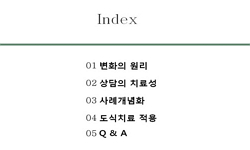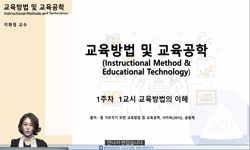연구목적 : 본 연구는 개인정신치료와 집단정신치료의 훈련을 받은 정신과 의사라면 누구든지 쉽게 이용할 수 있는 우리나라 입원환자에게 적합한 대집단 싸이코드라마의 모델을 개발하...
http://chineseinput.net/에서 pinyin(병음)방식으로 중국어를 변환할 수 있습니다.
변환된 중국어를 복사하여 사용하시면 됩니다.
- 中文 을 입력하시려면 zhongwen을 입력하시고 space를누르시면됩니다.
- 北京 을 입력하시려면 beijing을 입력하시고 space를 누르시면 됩니다.

입원환자를 대상으로 한 대집단 싸이코드라마의 치료요인 연구 = Therapeutic Factors of Large Group Psychodrama for Psychiatric Inpatients
한글로보기https://www.riss.kr/link?id=A1996957
- 저자
- 발행기관
- 학술지명
- 권호사항
-
발행연도
1999
-
작성언어
Korean
-
주제어
대집단 ; 입원환자 ; 치료요인 ; Therapeutic factor ; Inpatient ; Large group ; 싸이코드라마 ; Psychodrama
-
KDC
513.85
-
등재정보
KCI등재
-
자료형태
학술저널
- 발행기관 URL
-
수록면
306-316(11쪽)
- 제공처
- 소장기관
-
0
상세조회 -
0
다운로드
부가정보
국문 초록 (Abstract)
연구목적 :
본 연구는 개인정신치료와 집단정신치료의 훈련을 받은 정신과 의사라면 누구든지 쉽게 이용할 수 있는 우리나라 입원환자에게 적합한 대집단 싸이코드라마의 모델을 개발하고, 이를 입원환자에게 적용한 후 치료요인을 조사하여, 입원환자 치료에 도움이 되고자 하는 목적으로 본 연구를 시행하였다.
방 법 :
본 연구는 1998년 3월부터 1998년 9월까지 계요병원 입원환자 싸이코드라마에 참가한 모든 환자들과, 보조자아로 참석한 모든 치료팀을 대상으로 하였다. 대상자는 환자가 346명(남자 152명, 여자 194명)이었고, 치료팀은 총 60명이었다. 환자에게는 13가지 치료요인 척도, 싸이코드라마에 대한 일반적인 태도 척도, 도움이 되었던 점에 대해 기술하도록 한 설문지를 사용하였으며, 치료팀에게는 13가지 치료요인과 환자에게 도움이 되었던 점에 대해 기술하도록 한 설문지를 사용하였다. 환자집단은 관객, 보조자아의 역할을 한 환자, 공유(sharing)시간에 참여한 환자, 주인공으로 나누어 치료요인을 비교하였다.
결 과 :
먼저, 환자의 관점에서 본 치료요인은 다음과 같다.
1) 싸이코드라마에서의 역할에 관계없이 거의 대부분의 환자집단에서 실존적 인지와 일차가족집단의 교정적 감정경험을 매우 중시하였다.
2) 주인공, 보조자아의 역할을 한 환자, 공유시간에 참여한 환자와 같이 어떤 형태로든 싸이코드라마에 직접적으로 참여한 환자들은 사회화 기술의 발달을 중시하였으며, 보다 직접적인 형태인 행동으로 참가한 주인공이나 보조자아의 경우 카타르시스를 중시하였다.
3) 주인공을 제외한 모든 환자들은 희망의 고취를 중시하였다.
4) 관객의 경우 치료자와 환자에 대한 동일시와 보편성을 중시하였다. 환자와의 동일시는 공유에 참가한 환자의 경우 특히 중시하였고, 보편성은 보조자아로 참가한 환자의 경우 또한 중시하였다.
다음으로 치료팀이 평가한 치료요인을 환자들이 평가한 치료요인과 비교하면, 치료팀은 환자들보다 집단응집력을 더 중시하였으며, 반면 환자들이 중시한 사회화 기술의 발달과 치료자나 환자에 대한 동일시는 매우 낮게 평가하였다.
결 론 :
환자들의 역할에 따라 세분화하여 조사한 치료요인을 통해 입원환자 대집단 싸이코드라마의 특성과 환자의 역할에 따른 치료요인의 특성을 파악할 수 있었다. 본 모델은 입원환자 치료에 쉽게 적용될 수 있었으며, 전체적으로 많은 환자들에게 도움이 되었다.
다국어 초록 (Multilingual Abstract)
Objectives : This study was performed to make a model of large group psychodrama suitable for Korean inpatients and easy for psychiatrists trained in the individual psychotherapy and the group psychotherapy to use, to investigate the therapeutic facto...
Objectives : This study was performed to make a model of large group psychodrama suitable for Korean inpatients and easy for psychiatrists trained in the individual psychotherapy and the group psychotherapy to use, to investigate the therapeutic factors after applying this model to inpatients, and then to contribute to the treatment of inpatients.
Methods : The study subjects were all the inpatients and the therapists(the auxiliary ego's) who participated in psychodrama from March 1998 to September 1998. The subjects were composed of 346 inpatients (152 males, 194 female) and 60 therapists. To the inpatients 13-Therapeutic Factors Scale, Scale of General Attitude to Psychodrama, and the Questionnaire describing helpful things in psychodrama were administerd. To the therapists 13-Therapeutic Factors Scale and the Questionnaire describing helpful things in psychodrama were administered. The inpatient group were divided into 4 groups(the audience, the auxiliary ego's, the participants in sharing, the protagonists). The therapeutic factors among 4 groups were compared.
Results : First, the therapeutic factors described by the inpatients group were as follows :
1) Most inpatients made great account of ‘existential factor’ and ‘the corrective recapitulation of the primary family group’ regardless of their roles in psychodrama.
2) The inpatients who participated in psychodrama directly as the protagonists, the auxiliary ego's, or the participants in sharing made much account of ‘development of socializing techniques’. The inpatients who participated in psychodrama more directly
as the protagonists or the auxiliary ego's made much account of ‘catharsis’.
3) All the inpatients except the protagonists made much account of ‘instillation of hope’.
4) The audience made much account of 'identification' and 'universality'.
Especially,'identification with members' was much accounted of by the participants in sharing. ‘Universality’ also was much accounted of by the auxiliary ego's.
Next, when we compared the therapeutic factors in the inpatient group with those in the therapist group, the therapist group made much account of ‘group cohesiveness’ which the inpatient group made little account of. And the therapist group made no account of ‘development of socializing techniques’which the inpatient group made much account of.
Conclusion : By dividing the inpatient group according to their roles, we found the characteristics of the inpatient large group psychodrama and of the therapeutic factors according to the roles of the inpatients. This model could be applied to the treatment for the inpatients easily and was helpful to many inpatients on the whole.
동일학술지(권/호) 다른 논문
-
- 大韓神經精神醫學會
- 백주희
- 1999
- KCI등재
-
- 大韓神經精神醫學會
- 현명호
- 1999
- KCI등재
-
정신분열병에서의 도파민 D5 수용체 유전자 염기배열변이(T978C)에 관한 연관연구
- 大韓神經精神醫學會
- 김준모
- 1999
- KCI등재
-
한국인 정신분열병과 도파민 D5 수용체 유전자 연합연구
- 大韓神經精神醫學會
- 이민수
- 1999
- KCI등재





 RISS
RISS 스콜라
스콜라




